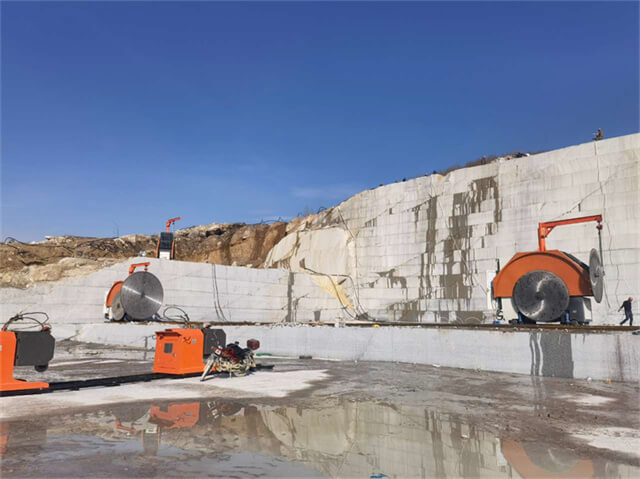Author:Huada Quarrying Machine FROM:Stone quarry machine manufacturer TIME:2023-06-28
Facing stone mining is an essential industry that provides valuable construction materials for various architectural projects. This process involves extracting natural stones from quarries and transforming them into high-quality facing stones, which are widely used in residential, commercial, and public buildings. The mining of facing stones plays a crucial role in meeting the growing demand for durable and aesthetically pleasing building materials around the world.

The mining of facing stones begins with the identification and selection of suitable quarries. Geological surveys and assessments are conducted to determine the quality and quantity of stone reserves in a particular location. Once a quarry is selected, the extraction process begins. Heavy machinery, such as excavators, bulldozers, and drilling equipment, is used to remove layers of soil and rock to expose the desired stone formations.
After extraction, the raw stones undergo various processes to transform them into facing stones. These processes include cutting, shaping, and polishing. Specialized machines and skilled craftsmen work together to create facing stones of different sizes, shapes, and finishes. The quality control measures are implemented at every stage to ensure that the finished products meet the required standards.

While facing stone mining is essential for the construction industry, it is important to consider its environmental impact. Mining activities can lead to deforestation, destruction of habitats, and disruption of ecosystems. To mitigate these effects, responsible mining practices are employed, such as reforestation programs, land rehabilitation, and the use of sustainable mining techniques.
Moreover, advancements in technology have allowed for more environmentally friendly mining practices. For example, water recycling systems can minimize water usage during the extraction and processing of facing stones. Energy-efficient machinery and renewable energy sources are also utilized to reduce the carbon footprint of the mining operations.

The mining of facing stones has significant economic and social impacts on both local and global scales. It creates job opportunities for miners, machine operators, stone cutters, truck drivers, and various other professionals involved in the industry. This, in turn, stimulates economic growth and reduces unemployment rates in the surrounding areas.
Furthermore, facing stone mining contributes to the development of local communities by supporting infrastructure projects, such as roads, schools, and healthcare facilities. It also fosters cultural preservation as many facing stones are sourced from historic quarries, providing a connection to the region's heritage.
In conclusion, facing stone mining is a vital industry that supplies the construction sector with high-quality building materials. With proper environmental management and responsible mining practices, the negative impacts of this industry can be minimized. The economic and social benefits of facing stone mining make it an integral part of sustainable development and architectural advancement.